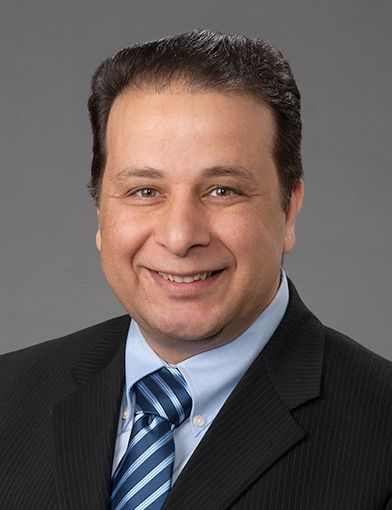Article
Intensive Blood Pressure Control Linked to Lower Risk of AFib
Author(s):
New research suggests an SBP target of 120 mmHg or less could lower risk of AFib up to 26%.

Elsayed Soliman, MD
New research from Wake Forest School of Medicine suggests intensive blood pressure control could pay dividends in the form of lowering risk of the most common form of arrhythmia.
Using data from the National Institutes of Health-sponsored SPRINT trial, a team of investigators found a systolic blood pressure target of <120 mmHg could lower a patient’s risk of atrial fibrillation (AFib) by 26% compared to a target of <140 mmHg.
"Hypertension is the most common modifiable risk factor for atrial fibrillation," lead investigator Elsayed Soliman, MD, professor of epidemiology and prevention at Wake Forest School of Medicine, part of Wake Forest Baptist Health, said in a statement. "And now, we have a potential pathway for prevention."
In an effort to determine whether intensive blood pressure control could lower risk of AFib in hypertensive patients, Soliman and a team of colleagues designed the current study using 8000-plus participants from the SPRINT trial.
Briefly, SPRINT included 9361 patients randomized to either standard or intensive blood pressure control—participants included in the current analysis were free of AFib at enrollment and had a median follow-up period of 5.2 years.
Of those included in the current analysis, 4003 participants were randomized to intensive blood pressure control and 4019 were randomized to a standard lowering group. Additionally, investigators only included patients with interpretable baseline ECG data and with follow-up ECG data.
Potential AFib diagnoses were determined using standard 12-lead ECG at baseline, year 2, year 4, and at a close-out visit. ECGs were performed through the use of using a GE MAC 1200 electrocardiograph at 10 mm/mV calibration and a speed of 25 mm/s and readings were performed at the Epidemiological Cardiology Research Center, Wake Forest School of Medicine. Of note, Cox proportional hazards regression were used to compare time to first occurrence of AF among the study arms.
Mean age of the 8022-person cohort included in the study was 68±9 years, 35.5% were women, and 31.6% were black. During 28,322 person-years of follow-up, a total of 206 incident AFib cases were observed by investigators. Of the 206 with AFib, 88 were in the intensive control group and 118 were in the standard control group (HR, 0.74; 95% CI, 0.56-0.98, P = .037).
Investigators highlighted the effect of intensive blood pressure control on AFib appeared to be consistent across all SPRINT subgroups, including those related to age, sex, race, systolic blood pressure tertiles, prior cardiovascular disease, and prior chronic kidney disease.
When examining patients with AFib, results indicated 55 of 77 patients who had more than 1 follow-up ECG after onset of AFib showed AFIb in all subsequent follow-up ECGs. The other 22 converted to sinus rhythm, according to the results of the investigators' analysis.
"This is the first evidence from a randomized controlled trial that showed benefit in reducing the risk of atrial fibrillation as a result of aggressive blood pressure control to a target of less than 120 mm Hg," Soliman said.
The study, “Effect of Intensive Blood Pressure Lowering on the Risk of Atrial Fibrillation,” was published online in Hypertension.





